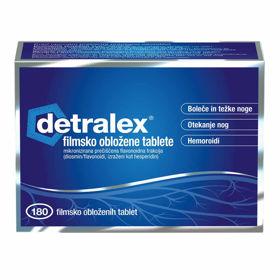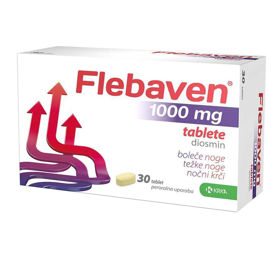Customer Questions:
I have blocked some veins - especially the ones in my legs. How does the treatment work? What can I do myself?
Pharmacist's response:
The veins in the legs carry blood back to the heart. However, they have one-way valves that prevent the backflow of blood back toward the legs. If you have chronic venous insufficiency (CVI), the valves don't work the way they should, and some blood backs up into your legs. This causes blood to pool in the leg veins. Over time, this chronic vein disease can cause pain, swelling, and skin changes in the legs. It can even cause open sores called leg ulcers.
The main goal is to stop swelling and prevent leg ulcers or act preventively if this has not already happened. In addition, your doctor may suggest a combination of treatments based on your age and known symptoms.
Some self-help options
- Compression Socks: These elastic socks apply pressure to your legs, helping blood return to the heart more easily. They come in various snug graduated compressions, lengths, and styles. Again, your doctor can suggest what would work best for you.
- Moving: try sitting or standing for a shorter period if you've been doing it too long. If you have to sit for a while, stretch or wiggle your legs, feet, and ankles frequently to increase blood flow. If you stand a lot, take breaks to sit down and put your feet up. This helps to reduce the pressure in the leg veins.
- Exercise: exercise also helps to pump blood. Walking is a good and straightforward way to strengthen your legs and increase blood flow.
- Medications: your doctor may prescribe an antibiotic to treat infections or ulcers on your feet. Sometimes you will be given medicine to prevent blood clots or treatment from relieving symptoms associated with vein disease (e.g., Detralex)
- Medical procedures: if your CVI has progressed, you may need non-surgical treatment.
There are several different ways to unclog the veins
There are several ways to open the veins, depending on where the clot is located and how severe the blockage is.
A blood clot in a deep vein of your leg (called deep vein thrombosis) can damage the valve. CVI can also be caused by irregular physical activity or sitting or staying in one place for too long. This increases the pressure in the veins and, as a result, very often also weakens the venous valves. Women are more often affected by the mentioned disease than men.
Increased probability of developing vein disease
There are risk factors that make the disease even worse.
The factors are as follows:
- obesity
- age - over 50
- pregnancy
- pregnancy - again
- you come from a family with a history of CVI
- you are a person with a history of blood clots
- smoking
It makes sense to think about health and a healthy lifestyle even before the condition with the veins worsens. You can take care of the blood vessels and the optimal strength of the vessel walls with several preparations, but you can also test the effectiveness of the action medicines for Detralex veins.
Interesting reading: Clogged neck veins - Signs
Interesting reading: Varicose veins symptoms











